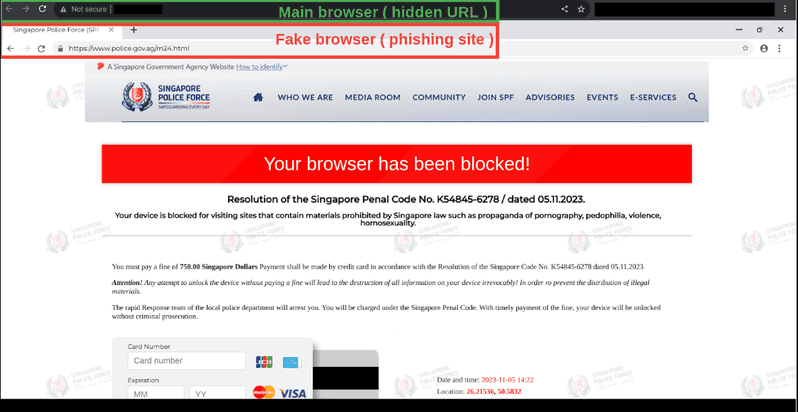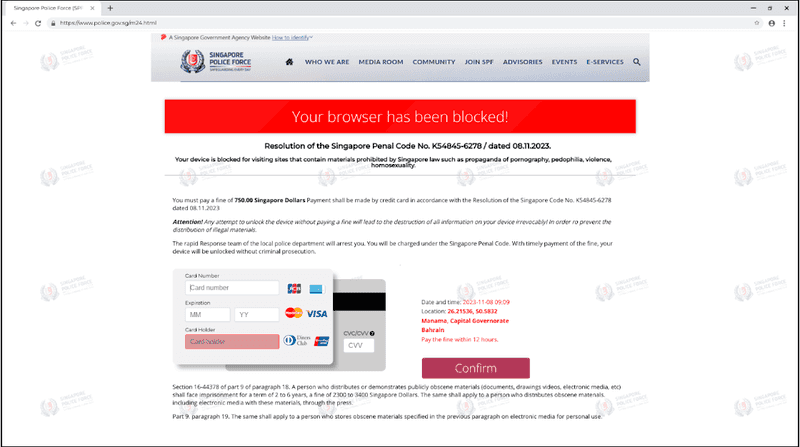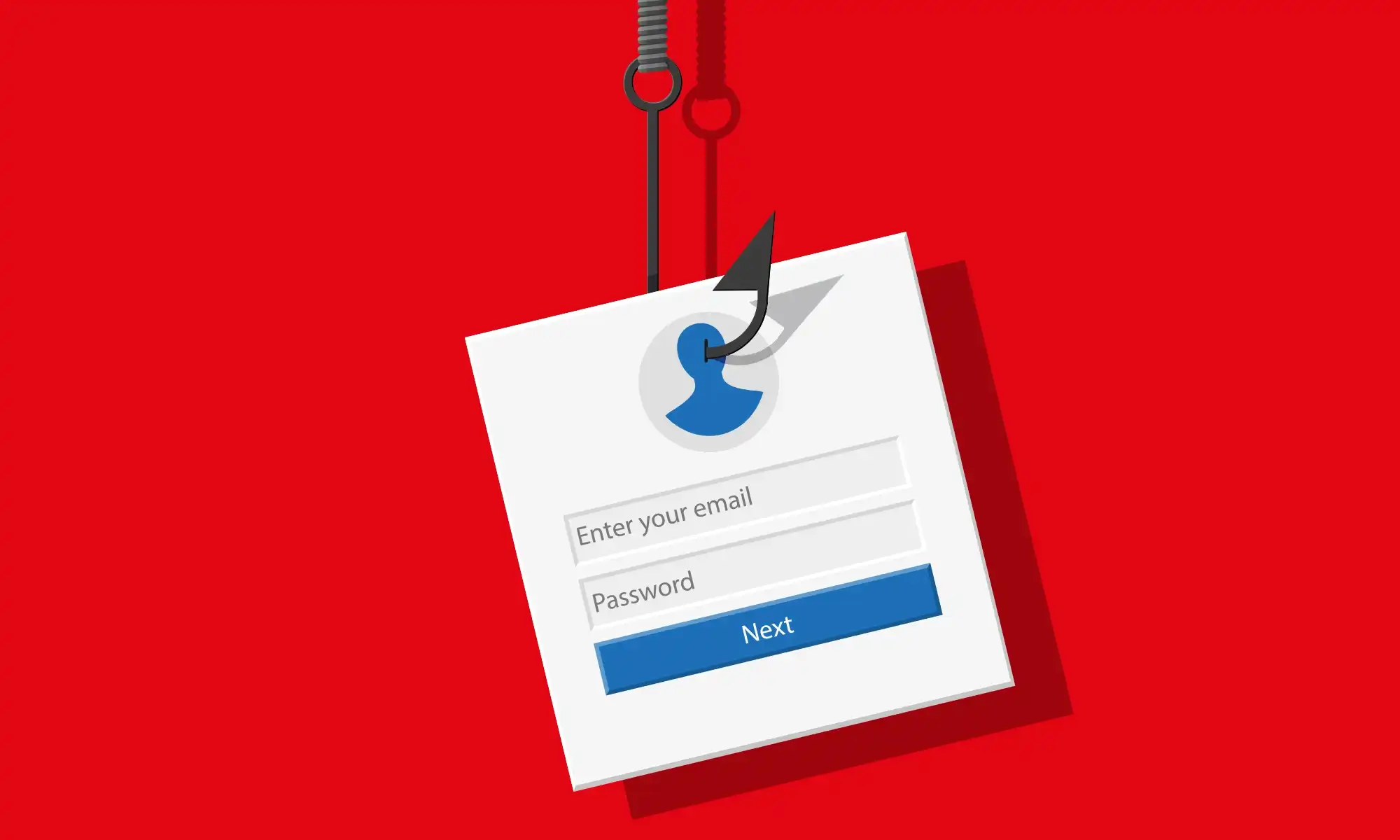Content
A Browser-in-the-Browser (BitB) attack is a sophisticated cyber threat involving injecting malicious code into a victim's web browser.
13 Nov 2023

Threat Overview:
This code creates a secondary browser within the victim's existing browser, allowing the attacker to manipulate web content, intercept network requests, and potentially gain control over the victim's browser and system. Understanding the BitB attack is crucial for organizations to develop effective mitigation strategies.

Once the website is opened, it appears as shown above (this will be the first step).

After enforcing the Full-screen display mode, only the inner browser will appear with the customized URL by the attacker.
Real-Case Scenarios of BitB Attacks:
CTM360 recently observed ongoing attack campaigns utilizing the BitB technique targeting ministries and government websites, specifically the interior ministries.
In the previously mentioned scenario, the official website of MOI Singapore remains unaffected and secure. However, the threat actor is carrying out a phishing attack by creating a fake website. Within this fraudulent site, instead of using traditional phishing methods, such as fake forms or malicious content, the attacker employs a fake browser interface within the phishing site, which appears to be the genuine site for MOI. When the victim accesses the site, they are presented with a full-screen display mode of this embedded browser, which tricks them into submitting their sensitive information.
Attack Methodology
To execute a Browser-in-the-Browser (BitB) attack, the attacker employs tactics to lure the user into visiting a malicious or compromised website. This website contains a phishing page hosted on the attacker's server. The phishing page utilizes JavaScript code to create a simulated browser window, simulating the appearance and behavior of a legitimate browser window. Within this simulated window, various types of fraudulent activities can be displayed.
Moreover, the simulated window displays a URL of the attacker's choice, such as https://accounts.google.com or https://login.microsoftonline.com. This is achieved by modifying the simulated address bar of the pop-up window using JavaScript. It may appear to the user that the specified URL is loaded within the pop-up window, but in reality, it is only shown as an image or text. The user may not notice the absence of SSL certificates or other security indicators typically present in a genuine browser window due to the full-screen display mode, which blocks the appearance of the main website’s URL due to the full-screen display model.
If the user falls victim to the BitB attack and enters their login credentials into the fake login form, the information is sent to the attacker's server via an AJAX request or a concealed form submission. Subsequently, the attacker gains access to the user's account on the legitimate service or proceeds with additional malicious activities such as identity theft or account takeover.
Potential Threats
Browser-in-the-Browser (BitB) attacks pose several potential threats and risks to victims. Here are some of the common threats associated with BitB attacks:
- Data Theft: Attackers can exploit BitB attacks to steal sensitive information, such as login credentials, financial details, personal data, or intellectual property. This stolen data can be used for identity theft, financial fraud, or sold on the dark web.
- Account Takeover: By manipulating the victim's browser and intercepting login credentials, BitB attacks can lead to unauthorized access to the victim's online accounts. Attackers may gain control over email accounts, social media profiles, online banking, or other services, enabling them to impersonate the victim or perform malicious activities.
- Malware Distribution: BitB attacks can be used as a vector to distribute malware onto the victim's system. The secondary browser created by the attacker can be used to download and execute malicious software, potentially leading to further compromise of the victim's device and sensitive data.
- Phishing and Social Engineering: Attackers can utilize BitB attacks to create convincing phishing scenarios. By simulating legitimate websites or services, they trick users into entering their login credentials or other sensitive information, which the attacker then captures and exploits.
Mitigation
The BitB attack is a tricky and risky phishing technique that can trick even careful users and bypass typical security measures. However, there are steps you can take to protect yourself from this attack:
- Be cautious of full-screen prompts: Exercise caution if a website unexpectedly opens a full-screen prompt or overlay. Take a moment to assess the situation and ensure that you are interacting with a legitimate website before entering any sensitive information.
- Be vigilant about website URLs: Pay close attention to the URL before entering any sensitive information. Check for any discrepancies or variations in the domain name or spelling that may indicate a phishing site.
- Pay attention to the details of the pop-up window, such as the size, position, appearance, and behavior of the elements. If something looks off or unusual, you should close the window and report it.
- Use a security-focused browser extension that can detect and block such phishing attempts automatically.
- Keep your browser up to date with the latest security patches and update whenever prompted by your browser.
- Make sure you have 2FA enabled for all of your critical services.
CTM360 is actively monitoring this phishing campaign and taking the necessary action by disrupting the attack and suspending the malicious site/domain. If you encounter any of such malicious sites, please report it to business@ctm360.com.
References
- https://news.sophos.com/en-us/2022/09/13/serious-security-browser-in-the-browser-attacks-watch-out-for-windows-that-arent/
- https://jscrambler.com/blog/browser-in-the-browser-a-new-wave-of-picture-in-picture-phishing-attacks
- https://www.loginradius.com/blog/identity/what-is-browser-in-browser-attack/




